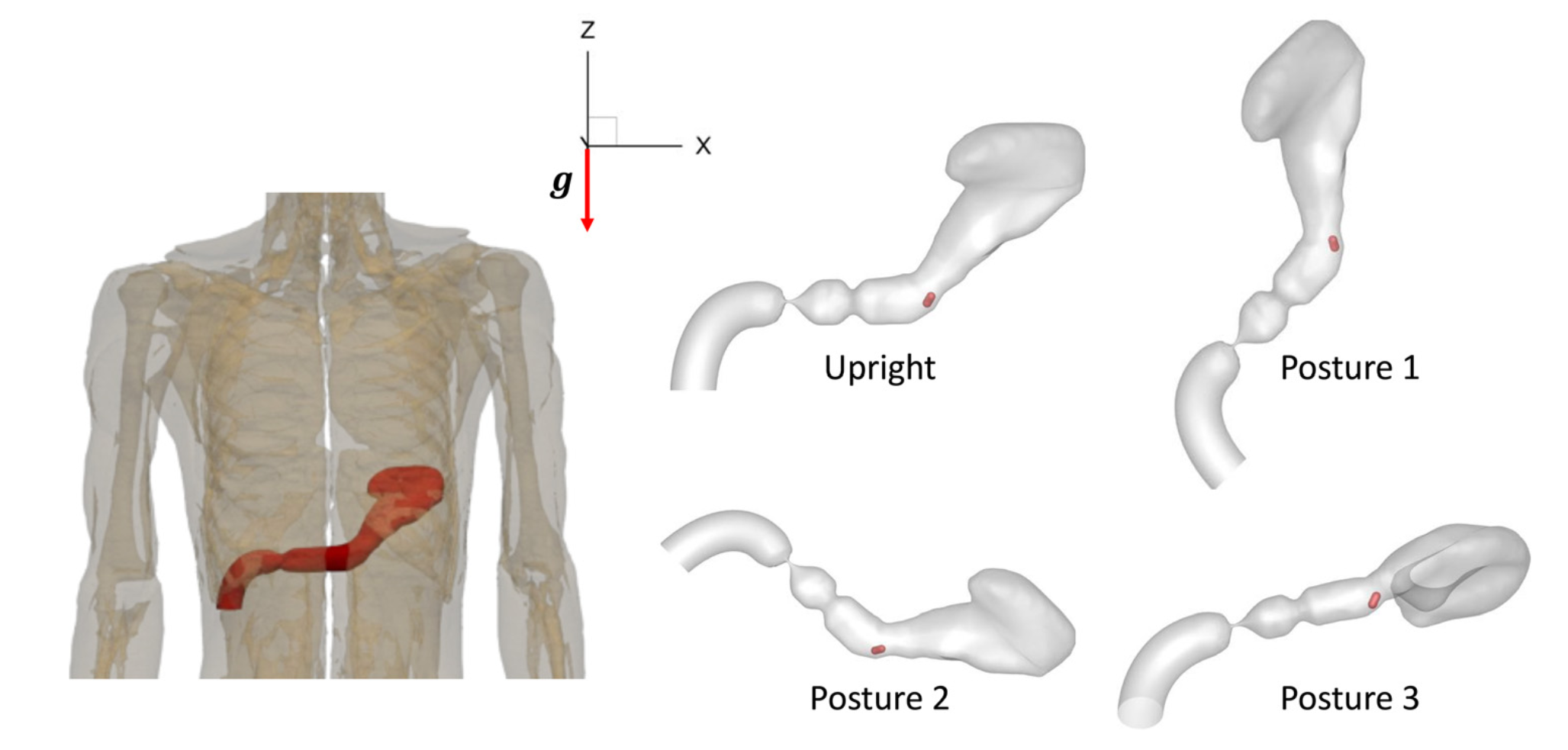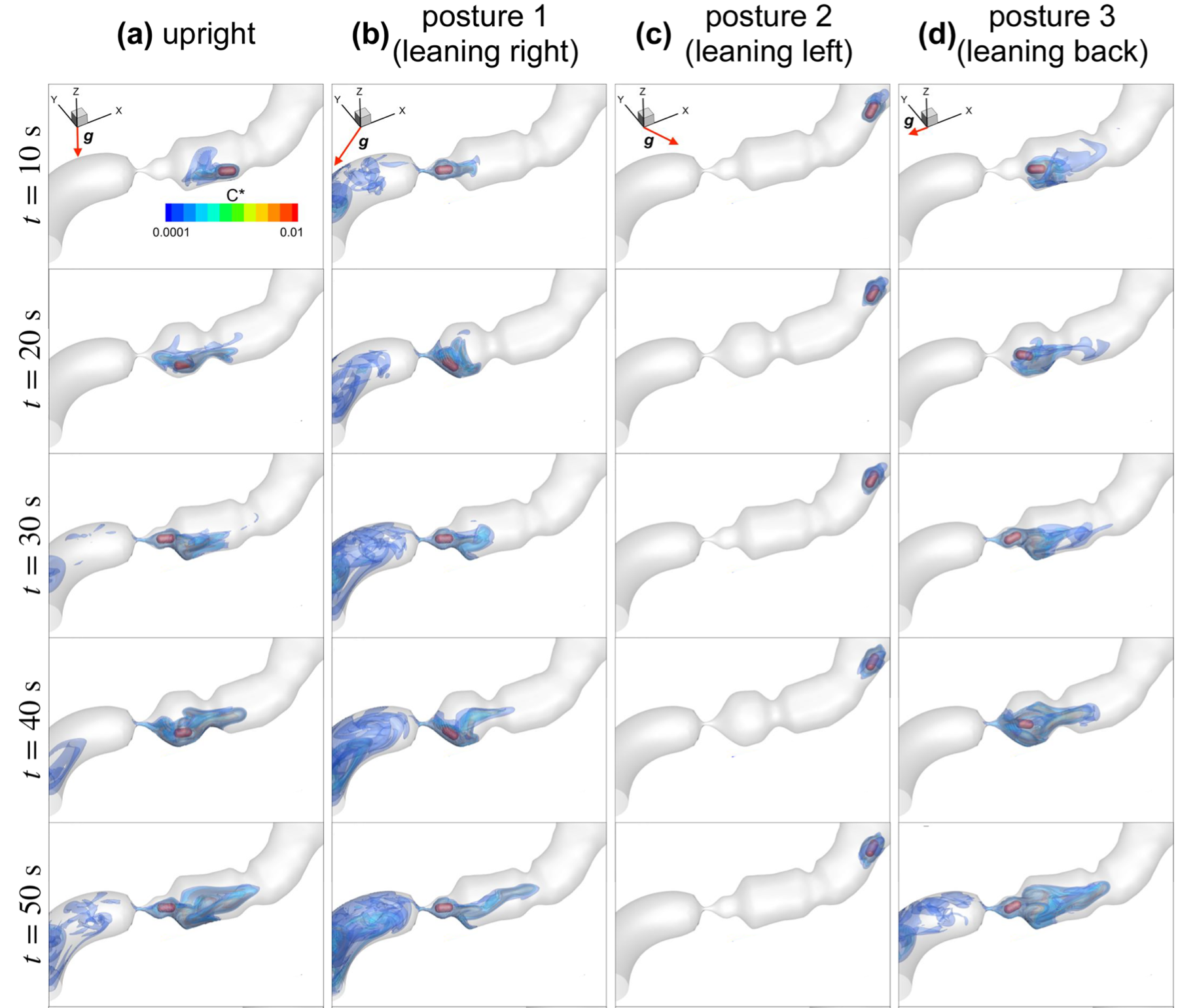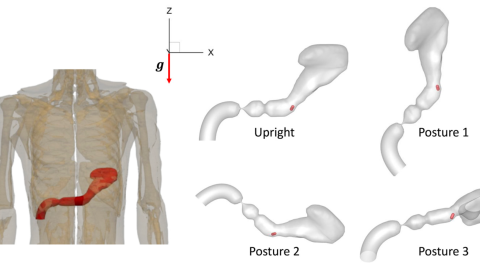- Engineers at Johns Hopkins University created a sophisticated computer simulation of the stomach, showing how posture affects pill absorption.
- Lying on one’s right side at an angle of 45 degrees can halve the time it takes for an oral medication to work compared to standing or sitting upright.
- Perhaps more important, the study shows that lying on one’s left side can drastically slow a drug down. In an accidental poisoning situation, this could save a life.
If you have a splitting headache or a strained muscle, feel free to pop a couple over-the-counter painkiller pills and lie down. Some advice, however: if you seek faster relief, lie on your right side, not your left.
In a paper published in the journal Physics of Fluids, a team of researchers from Johns Hopkins University report that leaning to your right at roughly a 45-degree angle greatly speeds the rate at which a pill dissolves and enters the duodenum, the first part of the small intestine. The small intestine is where most absorption of oral pharmaceutical drugs typically occurs.
According to the research, if a pill takes ten minutes to dissolve and enter the duodenum when leaning to the right, it could take 23 minutes when standing upright, and 100 minutes or more when leaning to the left. Overall, the time it takes for a pill to begin affecting the body typically ranges between 15 minutes to an hour, depending upon the pill’s design and chemical composition.
Pill posture
“We were very surprised that posture had such an immense effect on the dissolution rate of a pill,” senior author Rajat Mittal, a professor of mechanical engineering at Johns Hopkins and an expert in fluid dynamics and biomechanics, said in a statement. “I never thought about whether I was doing it right or wrong but now I’ll definitely think about it every time I take a pill.”
There’s a simple reason why posture affects pill absorption: gravity. The figure below shows the shape and position of the stomach when a person is upright, leaning or lying 45 degrees to the right (posture 1), leaning 45 degrees to the left (posture 2), or lying on their back (position 3).

As you can see, when leaning to the right (posture 1), the stomach is conveniently angled for anything that enters to fall straight to the bottom, ending up near the pylorus, the opening from the stomach into the duodenum. On the other hand, when leaning to the left (posture 2), the pill often lands higher up, forcing the stomach to contract its wall to churn and move the pill toward the small intestine.
The researchers built a sophisticated computer simulation of the stomach, which they called StomachSim, to model what happens to a pill when the consumer is in one of the four postures. StomachSim takes into account the biomechanics, fluid dynamics, and anatomy of the stomach, among other variables. In the simulation, swallowed medications began releasing their contents into the duodenum the quickest under the “leaning right” scenario.

Researchers were already aware that posture affects digestion speed and drug absorption through prior studies in humans, but the present work is the first to analyze the physical reasons why.
Just as, and perhaps more important than showing people how they can speed a pill’s effectiveness by lying on their right side at an angle of roughly 45 degrees, the study shows that lying on one’s left side can drastically slow a drug down. In an accidental poisoning situation, this tip could very well save a life.






